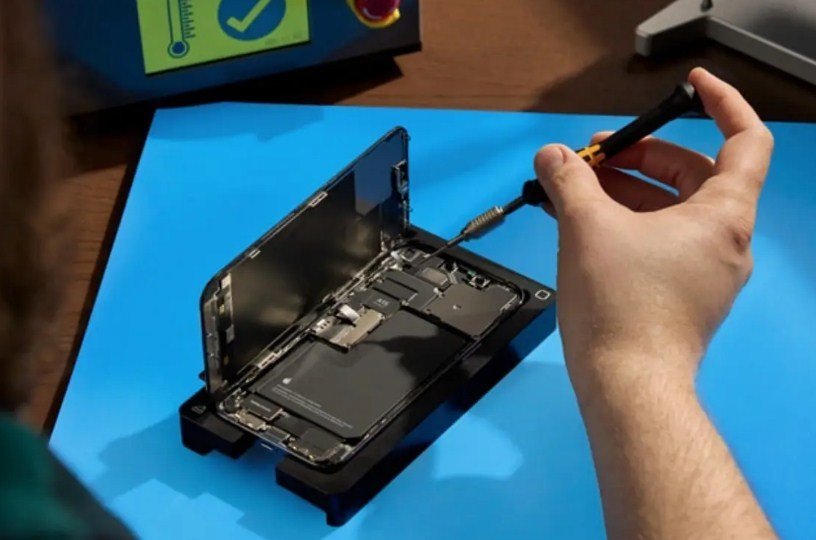Apple is reportedly working on its own battery technology that could offer faster charging and longer battery life for its future devices. The company is said to be developing new designs that have not been commercialized before, using innovative materials and substrates.
Apple’s battery ambitions
Apple has always been known for its focus on user experience and performance, and battery life is a key factor in both. The company has been investing in battery research and development for years, hiring experts from Samsung, Tesla, and other companies. Apple also acquired a startup called Anobit in 2011, which specialized in flash memory and power management.
According to a recent report from Korea’s ET News, Apple is now working on its own battery technology that could surpass the current industry standards. The report claims that Apple is involved in the entire battery design process, from materials to manufacturing. It also suggests that Apple has found new conductive materials that can improve battery performance and efficiency.
The report does not specify what kind of battery technology Apple is working on, but it mentions that it uses standard battery materials such as nickel or cobalt. However, it implies that Apple has found a way to use these materials in a novel way, creating new structures and substrates that can enhance the battery’s characteristics.
The report also states that Apple plans to introduce its new battery technology into its mobile devices, such as iPhones, iPads, and MacBooks, as soon as 2025. It also says that Apple’s battery technology could be applied to other fields, such as electric vehicles and renewable energy.
Why battery innovation matters
Battery technology is one of the most important and challenging areas of research and development in the tech industry. As devices become more powerful and complex, they also consume more energy and generate more heat. This poses a problem for battery design, as it has to balance between capacity, performance, safety, and cost.
The current mainstream battery technology is lithium-ion, which has been widely used since the 1990s. Lithium-ion batteries have many advantages, such as high energy density, low self-discharge, and long cycle life. However, they also have some limitations, such as slow charging speed, limited lifespan, and potential safety risks.
Therefore, many researchers and companies are looking for new ways to improve or replace lithium-ion batteries, using different materials, chemistries, and architectures. Some of the promising alternatives include lithium-sulfur, lithium-air, solid-state, and metal-air batteries. These technologies aim to offer higher capacity, faster charging, longer lifespan, and lower environmental impact.
However, developing and commercializing new battery technologies is not easy, as it requires a lot of time, money, and expertise. It also involves overcoming many technical and regulatory hurdles, such as scalability, reliability, safety, and standardization. Therefore, only a few companies have the resources and motivation to pursue battery innovation at a large scale.
Apple is one of those companies, as it has a history of creating its own solutions for its products, such as processors, software, and displays. Apple also has a huge customer base and a strong brand image, which gives it an edge in the market. By developing its own battery technology, Apple could gain more control over its device design and performance, and differentiate itself from its competitors.
What to expect from Apple’s new battery tech
While the details of Apple’s new battery technology are still unknown, we can expect some general benefits from it, based on the report and Apple’s previous achievements. Some of these benefits could include:
- Faster charging: Apple’s new battery technology could enable its devices to charge faster than ever, reducing the waiting time and inconvenience for users. For example, Apple could achieve something similar to the MagSafe Battery Pack, which can charge an iPhone 12 up to 50% in an hour, but without the need for an external accessory.
- Longer battery life: Apple’s new battery technology could also extend the battery life of its devices, allowing users to enjoy more features and functions without worrying about running out of juice. For example, Apple could improve the battery life of its MacBook Air and Pro models, which already offer up to 18 and 20 hours of wireless web browsing, respectively, thanks to the Apple M1 chip.
- Thinner and lighter design: Apple’s new battery technology could also reduce the size and weight of its batteries, making its devices thinner and lighter. This could enhance the portability and aesthetics of Apple’s products, as well as the comfort and ergonomics for users. For example, Apple could slim down the iPhone 13, which is rumored to have a slightly thicker design than the iPhone 12 due to the larger battery and camera module.
- More features and functions: Apple’s new battery technology could also enable its devices to support more features and functions, such as higher-resolution displays, faster processors, better cameras, and more sensors. These features and functions could improve the user experience and performance of Apple’s products, as well as the capabilities and possibilities for developers and creators. For example, Apple could enhance the display quality and refresh rate of its iPad Pro models, which already feature the Liquid Retina XDR display and the ProMotion technology.
Apple’s new battery technology could revolutionize the mobile device industry, as it could offer a significant improvement over the current standards. However, it is still unclear when and how Apple will unveil and implement its new battery technology, as it is still in the development stage and subject to change. Therefore, we will have to wait and see what Apple has in store for us in the future.

